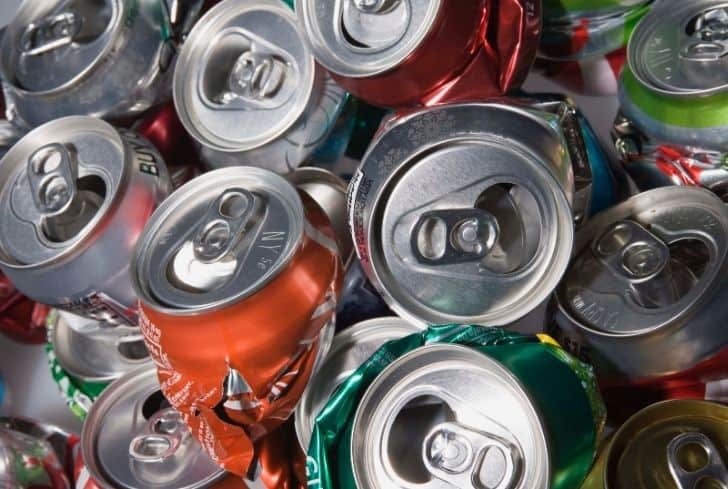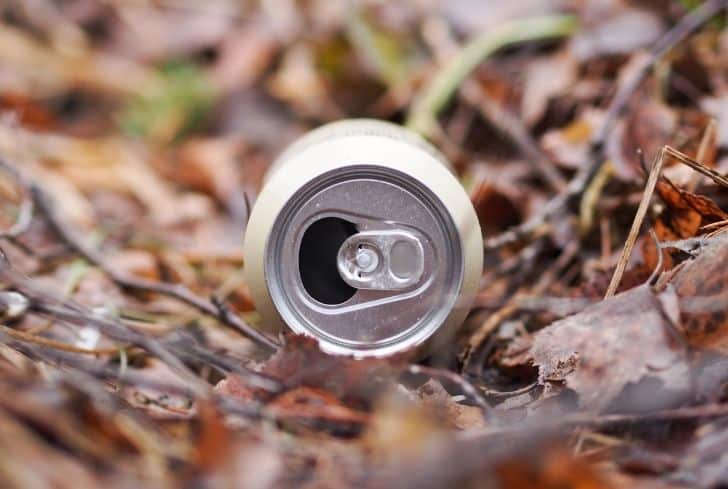Today, aluminum is a common element of most packaging. That is not even its only use. We also find aluminum as the primary material when getting beers or soft drinks. This is thanks to the durability and lightweight capacity of the material.
Unfortunately, these aluminum cans go out of use eventually. So, after you’re done drinking your beer, you are left with one question. You are asking yourself what you can do with the can.
Typically, the first thing on your mind is the garbage can. However, you have a new found love for your environment. As such, you are wondering if recycling is a reasonable possibility. Well, it’s okay to have these questions.
In this article, we will adequately answer the question, what is aluminum recycling. Then, we will discuss the step by step process of how to get it done. Afterward, in case you are still unsure about trying it out, we will discuss its benefits.
Dive in!
What is Aluminum Recycling?
First, let us provide an answer to the mind-boggling question as to if you can recycle aluminum. From the topic itself, there should be no doubt that you can recycle aluminum. Now that we have cleared that, what does it mean?
It implies that it is possible to reprocess used aluminum for new use. In this situation, you send your aluminum cans and products to recycling centers. Then, they process it into raw material. (We will get to the step by step process of recycling later). Now once this recycling gets completed, they come back as new materials. For instance, aluminum can that housed soft drinks previously can come back to house beer.
The great thing about this whole process is that it can go on indefinitely. Precisely, aluminum does not lose its characteristics regardless of the many times you recycle them. As such, you can continue to recycle without fear of wearing out the aluminum material.
Also, keep in mind that today, producers of aluminum work with various individuals, businesses, organizations, and even communities to this end. They work together to create industrial and curbside recycling programs that benefit the industry and community.
Step-by-Step Process of Aluminum Recycling
We get that the next thing on your mind is how the whole process of aluminum recycling occurs. It is okay to be curious. We also want to keep you informed. As such, we have detailed the whole process of aluminum recycling. Here you go:
Step 1. Collection of Aluminum Scrap
Like in every recycling activity, the first stage of aluminum recycling is the collection. This stage involves the collection of used aluminum materials from various homes. Typically, the materials collected will include aerosol cans, drink cans, and aluminum foil trays. Note that some of them might have specialized rules regarding their recycling.
Now, these materials get collected either through garbage collection centers. Otherwise, it can be through professional individuals and businesses with skills in this
Step 2: Sorting
The next stage is sorting. The reality is that most pile will contain mixed materials. That is, steel cans will find its way into the pile. As such, it becomes important to distinguish these materials. This way, they can both pass through the right recycling process.
As such, the collected materials make it to materials recovery facilities. Here, they get sorted. Then, they also get cleaned. Eventually, they get compressed into bales. Note that this is after the separation.
Step 3: Shredding
The next stage is shredding the aluminum bales. And this occurs in processing plants where the bales get transported to. At this plant, the bales enter an industrial shredder that cuts the bales into small pieces.
This stage aims to ensure that it’s easier for the bales to lose all coatings and paintings. Typically, these paintings or coatings are for decoration and protection. They are, however, secondary. Additionally, shredding makes melting easier.
Step 4. Sorted Through a Magnet
This stage is more for precaution. This is to ensure that no steel makes it to the next stage. As such, at the processing plant, a magnet stands tall above the bales. They then pick every form of steel left inside the shredded pieces. This ensures that the recycled aluminum contains no steel and meets the quality standards set.
Step 5. De-coating
At this stage, all that is left is aluminum. However, it is still not ready to enter the furnace. This is due to the presence of a coating on it. As such, a specialized de-coater becomes useful here.
It blows hot air on the shredded pieces. In turn, every painting, ink, or coating immediately vaporize. The pile then gets cleaned with the hot gas removed.
Step 6: Melting
Here, the pile that is now free of steel and coatings gets transferred into a furnace. The furnace temperature stands at 7000C. Then, other chemicals are also used inside the molt to ensure that it maintains the right composition.
In turn, this gets all the dross – impurities – to float on top. These impurities then get removed through a special scraping tool.
Step 7: Transfer to the Holding Furnace
Now the molten aluminum makes it to the holding furnace. Here, the aluminum stands until it becomes ready for its transformation into ingots. The holding furnace then regularly pours the aluminum inside molds. Now, note that each block or ingot contains as much as 1.6 million cans of drinks.
Step 8: Ingot Transportation
This is the final stage of the process. Here the ingots get lifted using overhead careens from the casting pits. Then, the ingots form a queue where they wait to get transported to a rolling mill.
The mill then rolls the ingots to create thin aluminum sheets. In turn, this ensures that the sheet enjoys flexibility and strength. It is these sheets that various industries then receive to package their goods. The sheets of metal are then collected and used by the packaging factories to make drink cans, foils and other useful products.
Amazing Benefits of Aluminum Recycling
So next up is why you should recycle aluminum. While you now know that it is possible to recycle it, you might just need some convincing. Well, recycling aluminum is a great choice due to its energy-saving component. However, that is not all.
Are you wondering what this is all about? Here are some benefits that you and the world stand to benefit from aluminum recycling:
1. Saves Energy
This is perhaps the most significant advantage that comes from aluminum recycling. It saves us from expending the considerable amount of energy that it takes for aluminum’s new production.
In case you are in doubt as to how it occurs, here is how. You will need to do loads of digging to get to aluminum. Typically, this requires the use of large machinery and equipment that you must power. This machinery, in turn, consumes significant energy that adds to the energy requirement of producing aluminum.
However, with recycling, we can avoid this process of digging. Now we can easily collect old and used aluminum. Then, apply them to make new materials that we need. Just so you know, with recycling, we save 95 percent of the energy needed for new and virgin production.
Even more, with recycling, there is only a 5 percent greenhouse gas emission of what we would have recorded naturally. So, you see, there is no case where recycling does not pay us. Also, keep in mind that this energy saved can power 4.4 million homes for a whole year. We bet that sounds impressive.
2. Prevents Depletion of a Valuable Commodity
In case you didn’t know, the material largely responsible for aluminum is Bauxite. Typically, to get this, mining is required. Now, considering the number of aluminum materials that we use each year, you can tell that there is considerable reliance on Bauxite.
Well, with recycling, this doesn’t have to be the case anymore. We can now avoid reliance on the new Bauxite. In turn, we can continue to maximize already mined Bauxite. The result of this is that we don’t exhaust our natural resources.
3. It’s Profitable
Another benefit of aluminum recycling is that it is profitable for both you and the companies. When it comes to production companies, thank recycling, they spend less on raw materials. In turn, it makes it easier for them to turn a profit after production.
On the other hand, it is profitable for you. This is because you can always sell your aluminum cans for money. For instance, almost a billion dollars get paid each year to owners of used aluminum cans. You can always jump in on this and benefit from it.
4. Prevents Environmental Degradation
We have got to tell you that this is a significant benefit that comes with recycling. Yes, you might think it doesn’t benefit you directly. However, you’re mistaken; the prevention of environmental degradation is something that affects us all.
Precisely, without recycling, we continue to mine. We bet we do not need to remind you that this causes significant air and water pollution. In fact, it is responsible for the release of these various toxins responsible for climate change.
When it comes to air pollution, the industry produces a significant amount of carbon dioxide. In fact, it contributes as much as 14.1 percent of the gas emissions associated with material that can be replaced with recycled materials. You can also count on the industry to produce nitrogen oxide and sulfur oxide, contributing to acid rains.
However, with recycling, you can avoid this. We bet that this is good news. Even water bodies are not left unaffected. This is because the whole process of new products results in around five tons of caustic mud.
In turn, this can contaminate both groundwater and surface water. Eventually, this doesn’t only have negative effects on aquatic life. It affects us as humans. Luckily, we can avoid all this with recycling. So, you can tell that it’s worth listening to recycling and protecting the environment
5. Helps in Satisfying the Increasing Demand
As the population increases so do the need for aluminum products. Today, aluminum has more uses and applications than other metals. This means that there should be a continuous production of this metal so as to meet the increasing demand. Mining alone is not sufficient enough to meet this demand. Recycling, therefore, comes in to bridge the gap.
In fact, half of the aluminum cans are recycled. Manufacturers today use approximately 35 percent of the recycled aluminum and approximately 65 percent of the natural aluminum to meet up their manufacturing needs. Therefore, it is necessary to recycle aluminum.
6. Continuous Use
Another good news that comes with recycling is the possibility of continuous use. Recycling paper is a great idea. However, in time, you would be unable to recycle a particular paper material again. Luckily, this is not the case with aluminum.
Precisely, we can recycle aluminum for infinity. It wouldn’t in any way affect the quality of property of the aluminum production. You see, recycling is sustainable, unlike the mining of new aluminum.
7. Reduction of Landfill
Waste management is becoming a big problem in today’s economies. Solid waste management is in fact one of the biggest problems facing many countries in the world today. Most countries dig up huge holes in the ground for burying waste. By recycling aluminum, the space that would be needed for burying the aluminum waste is saved and can be used for other purposes.
In summary, aluminum recycling is important to the environment and people all over the world. It is essential for all world economies to embrace the recycling of solid waste and reduce carbon dioxide emissions.
Conclusion
One thing you have learned so far is that it’s very well possible to recycle aluminum. In fact, we have also discussed the process through which you can get it done. However, we would want you to keep in mind that doing this is a great choice. And that is why we have discussed the various benefits that come with aluminum recycling.
So, now we believe you know better. There is no reason why recycling should not be top of your list. So, get to it and keep the environment safe.







